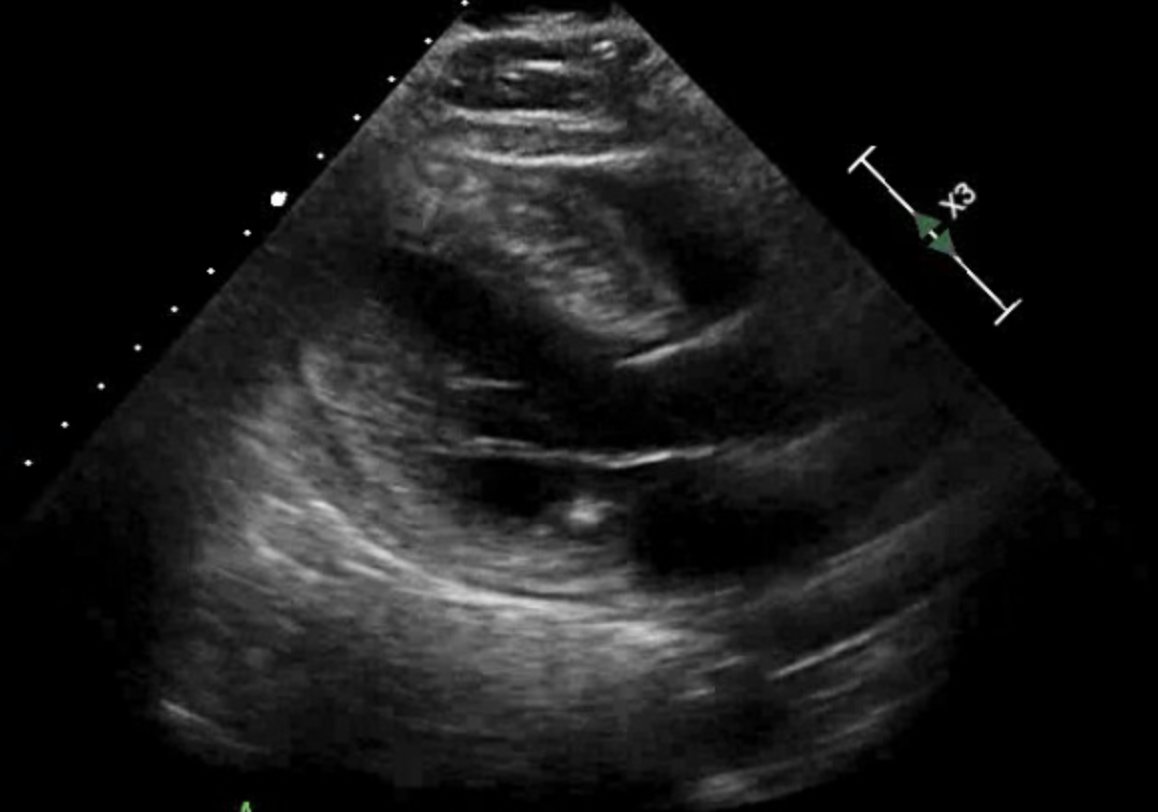[1]
Spudich JA. Three perspectives on the molecular basis of hypercontractility caused by hypertrophic cardiomyopathy mutations. Pflugers Archiv : European journal of physiology. 2019 May:471(5):701-717. doi: 10.1007/s00424-019-02259-2. Epub 2019 Feb 15
[PubMed PMID: 30767072]
Level 3 (low-level) evidence
[2]
van Driel B, Nijenkamp L, Huurman R, Michels M, van der Velden J. Sex differences in hypertrophic cardiomyopathy: new insights. Current opinion in cardiology. 2019 May:34(3):254-259. doi: 10.1097/HCO.0000000000000612. Epub
[PubMed PMID: 30747730]
Level 3 (low-level) evidence
[3]
Kraft T, Montag J. Altered force generation and cell-to-cell contractile imbalance in hypertrophic cardiomyopathy. Pflugers Archiv : European journal of physiology. 2019 May:471(5):719-733. doi: 10.1007/s00424-019-02260-9. Epub 2019 Feb 11
[PubMed PMID: 30740621]
[4]
Philipson DJ, Rader F, Siegel RJ. Risk factors for atrial fibrillation in hypertrophic cardiomyopathy. European journal of preventive cardiology. 2019 Feb 6:():2047487319828474. doi: 10.1177/2047487319828474. Epub 2019 Feb 6
[PubMed PMID: 30727760]
[5]
Mavrogeni SI, Tsarouhas K, Spandidos DA, Kanaka-Gantenbein C, Bacopoulou F. Sudden cardiac death in football players: Towards a new pre-participation algorithm. Experimental and therapeutic medicine. 2019 Feb:17(2):1143-1148. doi: 10.3892/etm.2018.7041. Epub 2018 Nov 30
[PubMed PMID: 30679986]
[6]
Maron MS, Wells S. Myocardial Strain in Hypertrophic Cardiomyopathy: A Force Worth Pursuing? JACC. Cardiovascular imaging. 2019 Oct:12(10):1943-1945. doi: 10.1016/j.jcmg.2018.09.026. Epub 2019 Jan 16
[PubMed PMID: 30660525]
[7]
Rigopoulos AG, Ali M, Abate E, Matiakis M, Melnyk H, Mavrogeni S, Leftheriotis D, Bigalke B, Noutsias M. Review on sudden death risk reduction after septal reduction therapies in hypertrophic obstructive cardiomyopathy. Heart failure reviews. 2019 May:24(3):359-366. doi: 10.1007/s10741-018-09767-w. Epub
[PubMed PMID: 30617667]
[8]
Walsh R, Mazzarotto F, Whiffin N, Buchan R, Midwinter W, Wilk A, Li N, Felkin L, Ingold N, Govind R, Ahmad M, Mazaika E, Allouba M, Zhang X, de Marvao A, Day SM, Ashley E, Colan SD, Michels M, Pereira AC, Jacoby D, Ho CY, Thomson KL, Watkins H, Barton PJR, Olivotto I, Cook SA, Ware JS. Quantitative approaches to variant classification increase the yield and precision of genetic testing in Mendelian diseases: the case of hypertrophic cardiomyopathy. Genome medicine. 2019 Jan 29:11(1):5. doi: 10.1186/s13073-019-0616-z. Epub 2019 Jan 29
[PubMed PMID: 30696458]
Level 3 (low-level) evidence
[9]
Afanasyev A, Bogachev-Prokophiev A, Lenko E, Sharifulin R, Ovcharov M, Kozmin D, Karaskov A. Myectomy with mitral valve repair versus replacement in adult patients with hypertrophic obstructive cardiomyopathy: a systematic review and meta-analysis. Interactive cardiovascular and thoracic surgery. 2019 Mar 1:28(3):465-472. doi: 10.1093/icvts/ivy269. Epub
[PubMed PMID: 30184144]
Level 1 (high-level) evidence
[10]
Robyns T, Nuyens D, Lu HR, Gallacher DJ, Vandenberk B, Garweg C, Ector J, Pagourelias E, Van Cleemput J, Janssens S, Willems R. Prognostic value of electrocardiographic time intervals and QT rate dependence in hypertrophic cardiomyopathy. Journal of electrocardiology. 2018 Nov-Dec:51(6):1077-1083. doi: 10.1016/j.jelectrocard.2018.09.005. Epub 2018 Sep 12
[PubMed PMID: 30497734]
[11]
Marrakchi S, Kammoun I, Bennour E, Laroussi L, Kachboura S. Risk stratification in hypertrophic cardiomyopathy. Herz. 2020 Feb:45(1):50-64. doi: 10.1007/s00059-018-4700-8. Epub 2018 Apr 25
[PubMed PMID: 29696341]
[12]
Daubert C, Gadler F, Mabo P, Linde C. Pacing for hypertrophic obstructive cardiomyopathy: an update and future directions. Europace : European pacing, arrhythmias, and cardiac electrophysiology : journal of the working groups on cardiac pacing, arrhythmias, and cardiac cellular electrophysiology of the European Society of Cardiology. 2018 Jun 1:20(6):908-920. doi: 10.1093/europace/eux131. Epub
[PubMed PMID: 29106577]
Level 3 (low-level) evidence
[13]
Yanagiuchi T,Tada N,Haga Y,Suzuki S,Sakurai M,Taguri M,Ootomo T, Utility of preprocedural multidetector computed tomography in alcohol septal ablation for hypertrophic obstructive cardiomyopathy. Cardiovascular intervention and therapeutics. 2019 Feb 6;
[PubMed PMID: 30725361]

